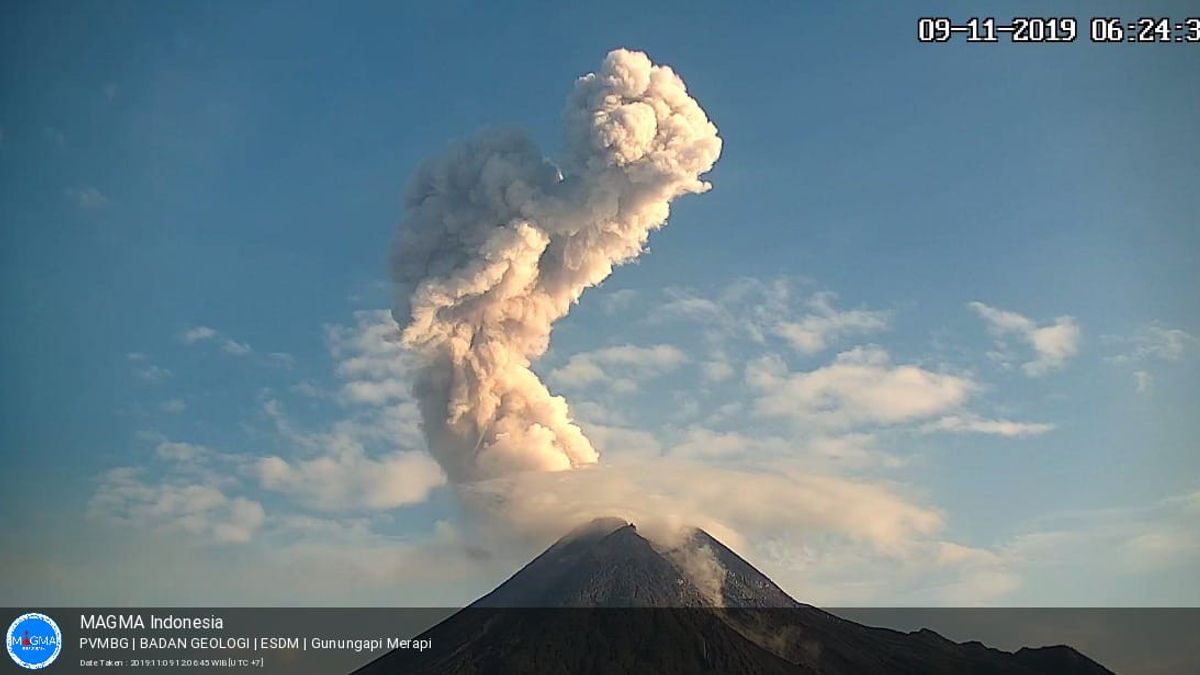YOGYAKARTA - Head of the Geological Disaster Technology Research and Development Center (BPPTKG) Hanik Humaida stated that the hot cloud phenomenon of the eruption of Mount Merapi, on Saturday (9/11) morning was triggered by the pressure of volcanic gas accumulation from within the mountain. This phenomenon is the same as the eruption of Mount Merapi on 14 October.
"The cause is still the same, the accumulation of gas," said Hanik as quoted by Antara, Saturday, November 9.
However, according to Hanik, the pressure of gas accumulation that triggered the hot cloud of eruption as high as 1,500 meters on Saturday was lower than before. On October 14th, the hot clouds of the Merapi eruption had a column height of 3,000 meters.
Mountain Activity Report Infographics #Merapi observation period November 8 2019 at 00: 00-24: 00 WIB. # Alert status since May 21 2018 pic.twitter.com/9VUNFm4mHO
- BPPTKG (@BPPTKG) November 9, 2019
Previously, Hanik explained that the pressure of gas accumulation arose along with the continuous supply of magma from Mount Merapi. The gas that had accumulated under the lava dome and released suddenly, broke through the lava dome so that it collapsed into a hot cloud.
It is known, after the incident on October 14, the volume of the lava dome shrank to 397 cubic meters from 483 cubic meters. That is, reduced to 90 cubic meters.
Regarding morphological changes and deformation due to the hot cloud eruption on Saturday (9/11) morning, it is not certain. Including changes in the volume of the lava dome after the hot cloud eruption.
According to Hanik, the data collection process after the eruption heat was still being carried out by the BPPTKG. "If it just erupted like this, we can't give exact information. What is clear is a small eruption which may not affect the volume," he said.
Video of the eruption of Mount Merapi 9/11/2019 06:21 WIB from the clangon post camera via @frekom_diy btw the chicken can be made ews here ... pic.twitter.com/vRjsLrJGlh
- VolcanoYT (@VolcanoYTz) November 9, 2019
Previously, the BPPTKG said that Mount Merapi released one hot cloud of eruption with a column height of 1,500 meters on Saturday (9/11) morning. The eruption hot cloud recorded on the seismogram at 06.21 WIB had a duration of 160 seconds with an amplitude of 65 mm.
Head of Emergency and Logistics Division of BPBD Sleman Regency, Makwan, said that the hot clouds of the eruption had not yet caused ash rain in the Sleman Regency area. "The direction of the wind is to the west, there is no ash rain in the Sleman Regency, he said.
The English, Chinese, Japanese, Arabic, and French versions are automatically generated by the AI. So there may still be inaccuracies in translating, please always see Indonesian as our main language. (system supported by DigitalSiber.id)













